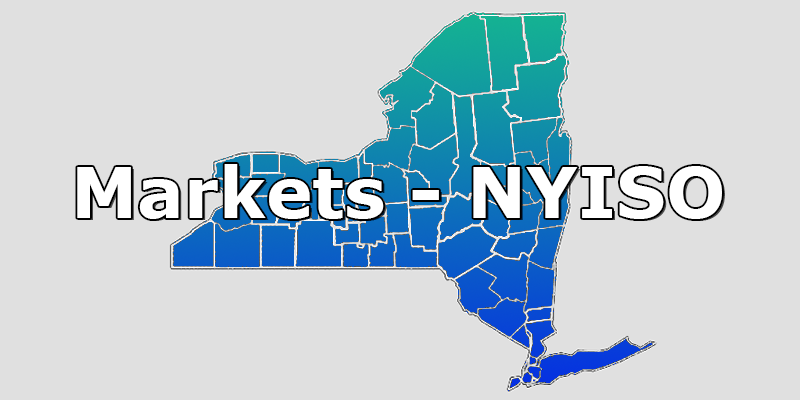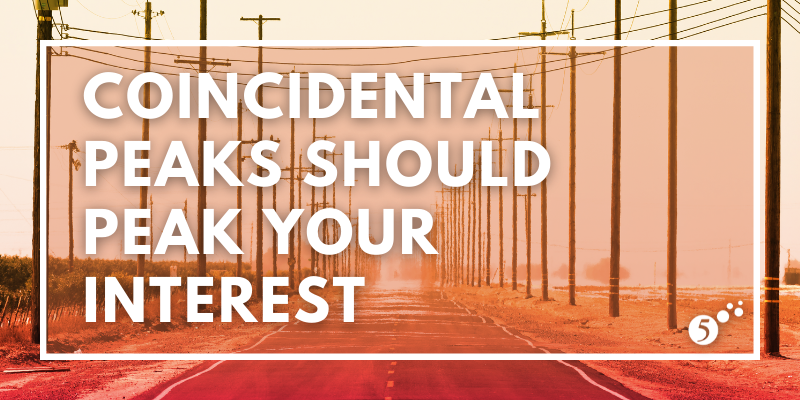As the calendar flips from August to September, ICAP management season is winding down, school is back in session and both the Mets and the Yankees are in first place. And while this summer was pretty hot for New York baseball, it was very ordinary in terms of the temperature. The months of July and August are particularly important for electricity customers in New York because a significant portion of next year’s electricity bill, the capacity obligation, is based on how much electricity a meter uses on the grid’s one highest hour of demand during those two months.
2 min read
Energizing the Empire State
By 5 on July 28, 2022
NYISO Creating More Access to Renewables
On July 11, New York celebrated the commissioning of the Empire State Transmission line. The 20-mile line connects the Dysinger switchyard in Royalton to the East Stolle switchyard in Elma, creating a new transmission hub in Western New York (see Figure 1). The $180 million power transmission line upgrade enables an additional 3,700 MWs of renewable energy to be transmitted throughout the state.
Topics: Markets NYISO
1 min read
Can NYC Go All-Electric?
By 5 on June 29, 2022
The All-Electric Building Act, known as New York S6843C, has died on the proverbial vine without getting a vote from the full New York State Senate or Assembly.
Topics: Markets NYISO
4 min read
Coincidental Peaks Should Peak Your Interest
By 5 on May 31, 2022
An Overview of Coincidental Peak Costs by ISO
Coincidental Peak (CP) is the measurement of an electricity meter’s actual usage at the time of the regional grid’s highest demand and determining that meter's share of the entire grid’s demand. This concept of identifying a facility’s share of the grid’s total maximum demand is often used in determining the allocation of specific cost components. The specific methodology of how that equation works and which cost components it impacts varies from region to region, and often even utility to utility, and even by customer class, but the overall concept is the same. In this post, we explain how this works in each of the major, deregulated electricity regions, and detail which costs are the most impacted by this variable.
Topics: Markets PJM NYISO ERCOT Demand Response Resiliency
3 min read
Bull Market Mitigation Strategies
By 5 on May 31, 2022
NYISO Power Market Update for May 2022
Near-term electricity prices in New York City continue to climb like an Aaron Judge home run that has not reached the apex of its arc. Figure 1 shows calendar year strip prices for 2023 (blue line) through 2026 (yellow line). Despite a short-lived correction in the middle of May, price movements have mostly been in one direction over the last year.
Topics: Markets NYISO
2 min read
Capacity Clears at Record Lows
By 5 on April 29, 2022
On April 1, 2022, the NYISO published the results of the six-month capacity Strip Auction for this coming summer period (May through October), establishing the first auction-based price signal for capacity for the upcoming months. This is important because capacity is the second largest cost component in a retail electricity contract. Often, when the wholesale price of energy increases, capacity prices decrease. Many expected lower capacity prices given how high wholesale power prices in the state have been, and that is exactly what happened with this most recent auction.
Topics: Markets NYISO
4 min read
Power Prices Surge Across the Empire State
By 5 on March 31, 2022
Why are power prices increasing throughout New York?
Like many other commodities, the price of wholesale electricity has drastically increased over the last 12 months nationwide. In the middle of March 2021, the wholesale price of electricity purchased for calendar year 2023 in NYC was trading at $35.60/MWh. Today, as shown in Figure 1, that calendar strip is trading at $67.89/MWh. The same dramatic rise in energy prices has occurred in Upstate New York as well. The wholesale price for electricity in calendar year 2023 has increased from $24.57/MWh to $42.97/MWh over the last year.
Topics: Markets NYISO
3 min read
Con Edison's 2022 Rate Case
By 5 on February 28, 2022
Higher Delivery Rates on the Way with Con Edison's 2022 Rate Case
ConEdison, the largest investor-owned utility (IOU) in the state of New York, has an obligation to its investors to operate profitably year-over-year. Doing so can be a challenge due to changing operating conditions like the COVID-19 pandemic, prolonged cold snaps like the Polar Vortex of 2014, or new climate-driven policy mandates for large-scale electrification powered by renewable sources that have yet to be developed. To ensure profitability, a formal process known as a Rate Case is undertaken annually to evaluate if the utility is adequately charging electricity and natural gas customers for its services.
Topics: Markets NYISO
2 min read
Batteries for Battery Park and Beyond
By 5 on January 27, 2022
Energy Storage is Helping to Solve NYISO’s Zero Emission Puzzle
Earlier this month, Governor Hochul proposed legislation that would require all buildings constructed after 2027 to produce zero emissions on-site. This proposal is like the New York City Bill, Int 2317, that passed last month, prohibiting the combustion of fossil fuels on-site in new construction starting in 2025. While new wind and PV solar generation are the most frequently discussed solutions to support the anticipated increase in electricity resulting from these new rules, energy storage is now at pace to become the next most recognized piece of the technology puzzle.
Topics: Markets NYISO
3 min read
Santa's Clear Path to More Green in NYC
By 5 on December 21, 2021
New York City’s electricity is primarily generated by fossil fuel-fired power plants which typically produce higher levels of greenhouse gases than generators in the rest of the state. Physical bottlenecks in the City’s electrical transmission infrastructure have limited its ability to receive additional power from zero-emission generators located in other parts of the state or neighboring regions. The lack of downstate renewable generating assets and physical constraints have created a challenge for the state in reaching its carbon reduction targets established in the Climate Leadership and Community Protection Act (CLCPA).



